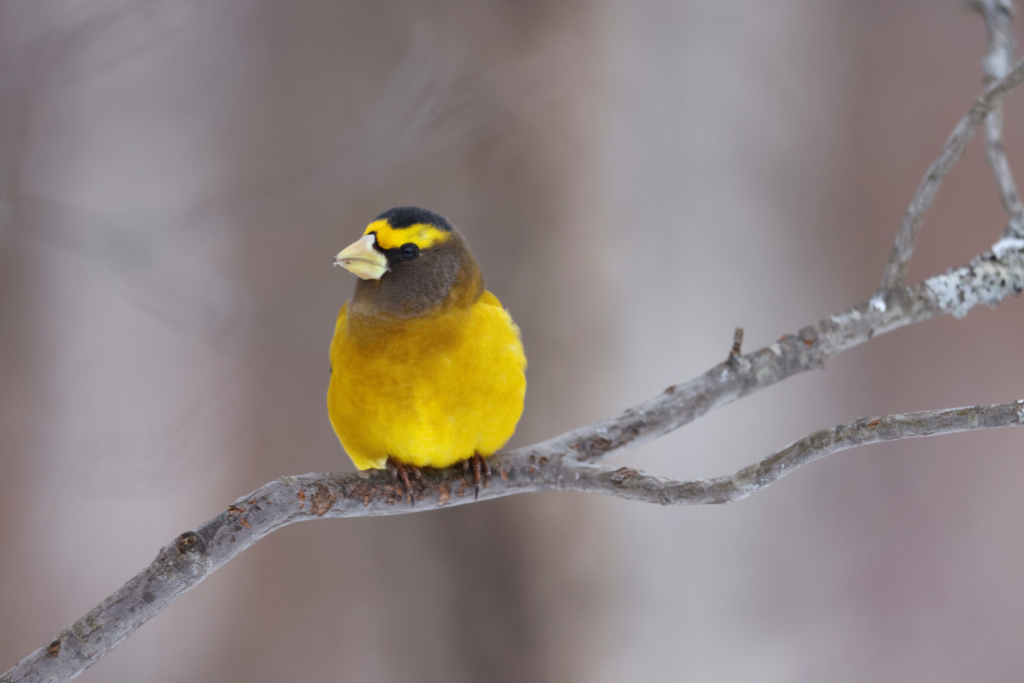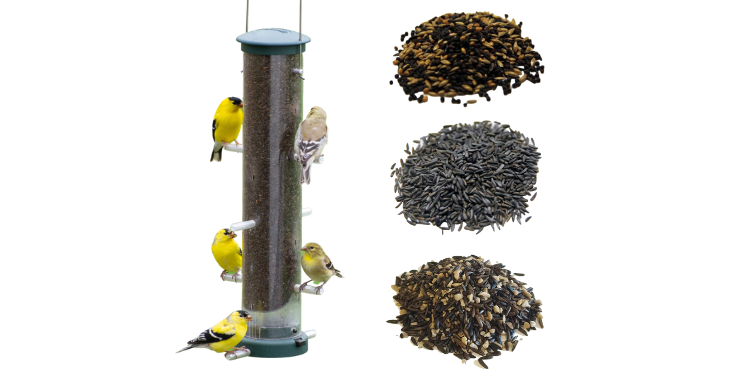Offer
Provide additional details about the offer you're running.
Provide additional details about the offer you're running.
Provide additional details about the offer you're running.

The Winter Finch Forecast is here! With the chilly weather comes the arrival of the winter finches. Each year the Finch Research Network publishes their predictions for finches heading our way.
The team of volunteers gather data of the Boreal Forest cone and berry crops and by analyzing the yield, are able to predict the amount of winter finches that will be heading south in search of food. This year is an exciting year as it is an irruptive year for the Evening Grosbeaks!
This year is an irruptive year for the Evening Grosbeaks! As a result we will be seeing huge numbers, which means it's important to supply food for them. We have already been seeing impressive numbers! Evening Grosbeaks are a large, stocky finch with a thick greenish-yellow bill and are easy to spot with their distinct yellow colouring. Adult males are yellow and black with a prominent white patch on the wings and a brown head, whereas females and juveniles are mostly greyish-brown, with white and black wings and some yellow on the neck and flanks.

As we will have large numbers of Evening Grosbeaks this winter, make sure you're ready for them! We recommend a Fly Through Feeder and our Seasons Woodland blend for the perfect combo. The robust and chunky nature of the Seasons Woodland blend is well suited to the big-billed beak of the Evening Grosbeaks.

As we move into January and February we expect be seeing large numbers of another finch, the Common and Hoary Redpolls. Common Redpolls can be spotted with their brown and white bodies with heavily streaked sides. Look for a small red forehead patch, black feathering around a yellow bill, and two white wingbars. Males have a pale red vest on the chest and upper flanks, whereas female do not. Hoary Redpolls are very similar to the Common Redpoll but slightly paler, with a smaller bill and an unstreaked rump and undertail coverts.

To attract Redpolls to your backyard this winter, pick up one of our three Finch Bird seed blends and a Finch Feeder. The Redpolls beaks are more suited to the smaller openings on the finch feeder and prefer the finer size of seed. Choose from the Wild Finch Blend, the Nyjer Seed, and the Nychip Finch Blend. The size of the seed in these blends allows the seed to freely flow through the small portholes of all finch feeders.

It's going to be a great winter to see finches, especially the Evening Grosbeaks! So, get those feeders shined up, filled up and hung up, and be on the look out for Evening Grosbeaks and Redpolls.
Have you noticed any finches at your feeders this winter? Comment below! And as always, drop us a line if you have any questions.
Subscribe to our newsletter to never miss out on important birding info, as well as exclusive offers and deals on Gilligallou products!
Author - Emily Kadoke-Scantlebury
High Quality Blend